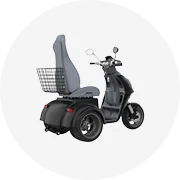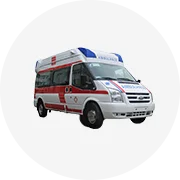Types of Tuktuk Tricycle
Tuk-tuk Tricycle, also known as a three-wheeled taxi, is a versatile motorized vehicle with a cabin for the driver and passenger seating behind, typically covered with a canvas top. These popular vehicles serve various purposes across the world and come in several specialized types:
Electric Tuk-tuk Tricycles
Electric models have gained tremendous popularity in urban environments due to their zero emissions and quiet operation. They offer significant environmental benefits while providing substantial cost savings on fuel and maintenance.
Best for: Urban commuting, eco-conscious operators, short-distance travel, and budget-conscious business owners
Luxury Tuk-tuk Tricycles
Premium models feature air conditioning, quality sound systems, and plush seating for enhanced passenger comfort. These upscale versions are frequently found in tourist destinations and offer a more refined travel experience.
Best for: Tourism services, premium transportation, and customer-oriented businesses
Delivery Tuk-tuk Tricycles
Purpose-built for cargo transportation with specially designed storage areas, reinforced chassis, and practical loading features. These utility vehicles serve essential roles in logistics and local delivery services.
Best for: Small businesses, courier services, food delivery, and urban logistics
Tourist Tuk-tuk Tricycles
Customized for sightseeing with open sides, informational features, and specialized seating arrangements. Popular in vacation destinations, these vehicles offer guided tours through popular attractions and historic areas.
Best for: Tour operators, sightseeing businesses, and hospitality companies
Expert Tip: When choosing between different Tuktuk types, consider your primary business model and operating environment. Electric models excel in areas with environmental restrictions, while tourist models offer better return on investment in popular vacation destinations.
| Tuktuk Type | Primary Use | Key Features | Best Operating Environment |
|---|---|---|---|
| Electric | Urban commuting | Zero emissions, quiet operation, low maintenance | Cities with eco-initiatives, short routes |
| Luxury | Premium transportation | Air conditioning, quality audio, comfortable seating | Tourist areas, business districts |
| Delivery | Cargo transportation | Enhanced storage, reinforced structure, utility features | Commercial zones, urban logistics networks |
| Tourist | Sightseeing tours | Open design, tour-friendly features, group seating | Vacation destinations, historic districts |
Specifications of Tuktuk Tricycle
Understanding the technical specifications of Tuktuk tricycles is essential for operators, owners, and potential buyers. These specifications determine performance, reliability, and suitability for specific applications.
| Specification Category | Details | Significance |
|---|---|---|
| Engine | Displacement: 100cc-200cc | Determines power output and fuel efficiency |
| Type: 4-Stroke | Provides balance between power and efficiency | |
| Transmission: Manual or Automatic | Affects ease of operation and maintenance requirements | |
| Body and Chassis | Frame: Steel or Aluminum | Impacts durability, weight, and corrosion resistance |
| Length: 3200mm-3800mm | Determines passenger/cargo capacity | |
| Width: 1200mm-1600mm | Affects maneuverability in tight spaces | |
| Height: 1800mm-2200mm | Influences comfort and clearance | |
| Seating: 2-4 passengers + driver | Determines passenger capacity and revenue potential | |
| Wheels & Suspension | Wheel Size: 12-16 inches | Affects ride quality and handling |
| Tire Size: 3.00-12 to 4.00-16 | Impacts traction and load capacity | |
| Suspension: Telescopic/Double Wishbone | Determines ride comfort and stability | |
| Electrical System | Battery: 12V Lead-Acid/Lithium-Ion | Powers starting system and accessories |
| Lighting: Halogen/LED | Ensures visibility and safety during operation |
Tuktuk Tricycle Dimensions
Buying Tip: When evaluating specifications, prioritize engine displacement and frame material based on your primary use case. For passenger services, comfort features and seating capacity should be key considerations. For delivery services, focus on cargo capacity and chassis strength.
Maintenance of Tuktuk Tricycle
Regular maintenance is crucial for ensuring the longevity, safety, and performance of your Tuktuk tricycle. Following a structured maintenance schedule helps prevent unexpected breakdowns and costly repairs.
Engine Maintenance
- Oil change: Every 6 months or 1000 kilometers
- Spark plug inspection: Every 12 months or as needed
- Valve clearance check: Every 12 months
- Fuel filter replacement: Every 12 months
- Engine cooling inspection: Every 12 months
Chassis & Drivetrain
- Chain lubrication: Every 2 weeks or as needed
- Brake adjustment: Every 3 months
- Wheel spoke tensioning: Every 6 months
- Suspension adjustment: Every 12 months
- Tire pressure check: Weekly or before trips
Electrical System
- Battery inspection: Monthly
- Lighting check: Before each use
- Wiring inspection: Every 6 months
- Horn function test: Monthly
- Charging system check: Every 6 months
Body & Interior
- Seat inspection: Every 6 months
- Bodywork check: Every 6 months
- Emergency kit inspection: Every 6 months
- Cabin cleaning: Weekly
- Fastener tightening: Every 3 months
Important Safety Note: Never skip scheduled maintenance, as this can lead to component failure and potential safety hazards. Always use manufacturer-recommended parts and fluids for best results.
Maintenance Frequency Breakdown
How to Choose a Tuktuk Tricycle
Selecting the right Tuktuk tricycle requires careful consideration of several factors to ensure it meets your specific needs and provides good value for your investment.
Purpose Assessment
Determine your primary use case before making a selection. Different models are optimized for different applications:
- Passenger transportation
- Goods delivery
- Tourism services
- Personal transportation
Decision Impact: Directly affects model selection, capacity requirements, and features needed
Brand & Model Research
Investigate various manufacturers and their reputation for:
- Build quality and durability
- Parts availability
- Service network
- User reviews and satisfaction
Decision Impact: Affects long-term reliability, maintenance costs, and resale value
Budget Considerations
Establish a comprehensive budget accounting for:
- Initial purchase price
- Operating costs (fuel, maintenance)
- Insurance and licensing fees
- Expected return on investment
Decision Impact: Determines available options and total cost of ownership
Test Drive & Inspection
Always conduct a thorough evaluation before purchase:
- Engine performance and sound
- Handling and maneuverability
- Comfort for driver and passengers
- All systems functionality
Decision Impact: Reveals potential issues and confirms suitability for intended use
Expert Advice: Consider future-proofing your purchase by choosing a model that can adapt to changing business needs. Many operators find that starting with a slightly higher specification than immediately needed provides better long-term value and flexibility.
Selection Process Checklist
DIY Repairs and Replacement Guide
Many Tuktuk tricycle components can be repaired or replaced by owners with basic mechanical skills. This DIY approach can save money and reduce downtime when professional service isn't immediately available.
Wheel Replacement
- Loosen wheel nuts or bolts while tricycle is still on ground
- Raise tricycle using a jack or sturdy lever to appropriate height
- Remove nuts/bolts completely and carefully remove old wheel
- Position new wheel on axle or wheel hub
- Hand-tighten nuts/bolts in a star pattern
- Lower tricycle and fully tighten fasteners to specified torque
Difficulty Level: Easy
Battery Replacement
- Disconnect negative (-) terminal first, then positive (+)
- Remove any battery hold-downs or brackets
- Carefully lift out old battery (caution: heavy)
- Clean battery tray and terminals
- Install new battery and secure with hold-downs
- Connect positive (+) terminal first, then negative (-)
- Apply terminal protectant to prevent corrosion
Difficulty Level: Easy
Safety Warning: Always disconnect the battery before performing electrical repairs. Use proper safety equipment including gloves and eye protection when working with mechanical components. When in doubt about a repair procedure, consult a professional mechanic.
Engine Replacement
This is a complex procedure requiring advanced mechanical knowledge:
- Disconnect battery and drain all fluids
- Remove all electrical connections to engine
- Disconnect fuel lines and throttle cables
- Remove exhaust system and drive components
- Unbolt engine mounting brackets
- Carefully extract engine from frame
- Install new engine following reverse procedure
- Refill all fluids and check for leaks
Difficulty Level: Advanced
Body Panel & Seat Replacement
Cosmetic and comfort improvements:
- Identify and remove all fasteners securing panels/seats
- Note cable routing and connections before removal
- Carefully remove old components
- Clean mounting surfaces
- Position new panels/seats and align mounting holes
- Install and tighten fasteners in proper sequence
- Reconnect any electrical components
- Test for proper fit and function
Difficulty Level: Moderate
DIY Tip: Create a photographic record of your disassembly process by taking pictures at each step. This visual reference will be invaluable when reassembling components, especially for complex repairs involving multiple parts or connections.
| Repair Type | Tools Required | Estimated Time | Skill Level |
|---|---|---|---|
| Wheel Replacement | Jack, lug wrench, torque wrench | 30-45 minutes | Beginner |
| Battery Replacement | Basic wrench set, wire brush | 15-30 minutes | Beginner |
| Engine Replacement | Complete mechanics tool set, engine hoist | 4-8 hours | Advanced |
| Body Panel Replacement | Screwdrivers, socket set, trim tools | 1-2 hours | Intermediate |
| Seat Replacement | Screwdrivers, socket set | 30-60 minutes | Beginner |
Frequently Asked Questions
To maximize the lifespan of your Tuktuk tricycle, implement these key practices:
- Follow the maintenance schedule meticulously, never skipping oil changes or inspections
- Use only genuine or high-quality replacement parts that meet manufacturer specifications
- Operate within specified load limits to prevent structural and mechanical stress
- Adhere to recommended speed limits to reduce wear on drivetrain components
- Protect from extreme weather when possible with proper storage or covers
- Clean regularly to prevent corrosion, especially in coastal or high-humidity areas
- Train operators properly to avoid harsh driving that accelerates wear
Yes, Tuktuk tricycles are highly customizable vehicles that can be adapted for various business applications:
- Cargo compartments can be modified with specialized storage for specific goods (refrigerated, secured, etc.)
- Passenger areas can be reconfigured with different seating arrangements or comfort features
- Branding opportunities exist through custom paint, graphics, and signage
- Additional features like PA systems, television screens, or service counters can be integrated
- Powertrain modifications can enhance performance for specific terrain or load requirements
Many manufacturers offer customization services, or you can work with specialized conversion shops for more extensive modifications.
Fuel efficiency in Tuktuk tricycles varies depending on several factors:
- Standard gasoline models typically achieve 30-40 kilometers per liter under optimal conditions
- Load weight significantly impacts consumption—heavier loads can reduce efficiency by 10-20%
- Driving conditions like stop-and-go traffic or hilly terrain can decrease efficiency
- Engine condition and maintenance directly affect fuel economy
- Speed is a major factor—most efficient operation occurs at moderate speeds (25-40 km/h)
Modern fuel-injected models generally offer better efficiency than older carbureted versions. Electric models, of course, eliminate fuel consumption entirely, replacing it with electricity costs.
The environmental impact of Tuktuk tricycles varies significantly by model and power source:
- Electric Tuktuks produce zero direct emissions and are the most environmentally friendly option
- Modern gasoline models with fuel injection and catalytic converters offer reduced emissions compared to older versions
- CNG/LPG converted Tuktuks produce fewer particulates and lower CO2 than traditional gasoline models
- Older two-stroke models have significant emissions and are being phased out in many regions
Many cities are implementing incentives for operators to switch to electric or cleaner fuel alternatives, making environmentally friendly options increasingly accessible and economically viable.
Modern Tuktuk tricycles incorporate various safety features, though these can vary by manufacturer and model:
- Passenger restraints including seat belts in newer models
- Reinforced frame structures to protect occupants in case of collision
- Enhanced braking systems with hydraulic or dual-circuit designs
- Improved lighting packages with LED technology for better visibility
- Wider track width in newer designs for improved stability
- Safety equipment including first aid kits, fire extinguishers, and reflective materials
- Driver training programs offered by manufacturers or operators
When purchasing, prioritize models with enhanced safety features, especially if passenger transportation is the primary use case. Remember that operator training is equally important for ensuring safe operation.






























































